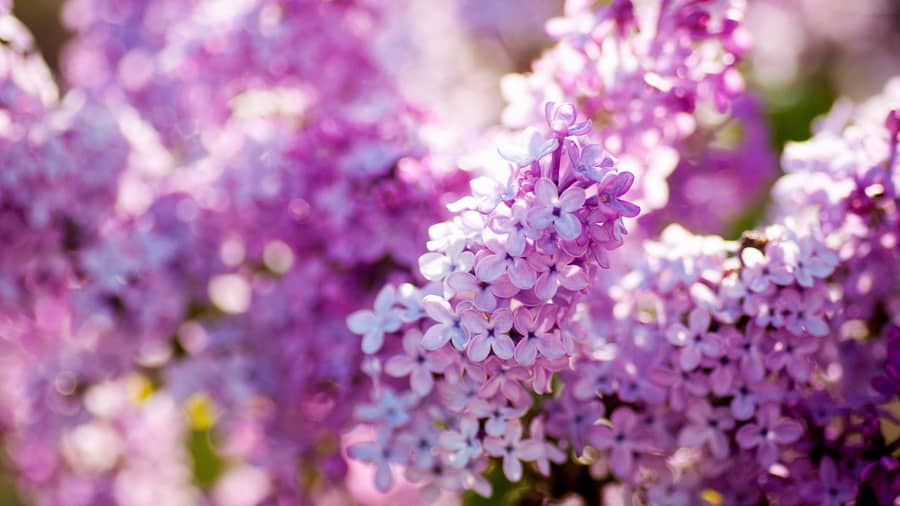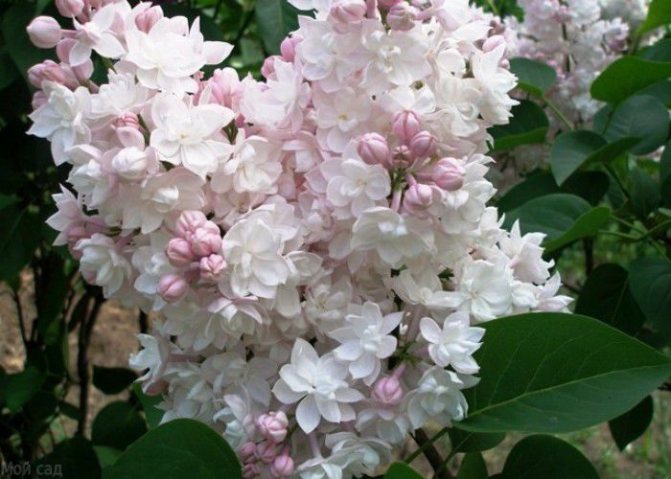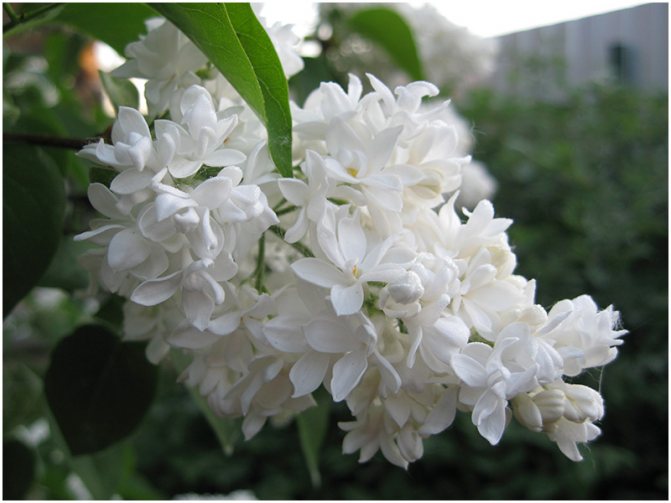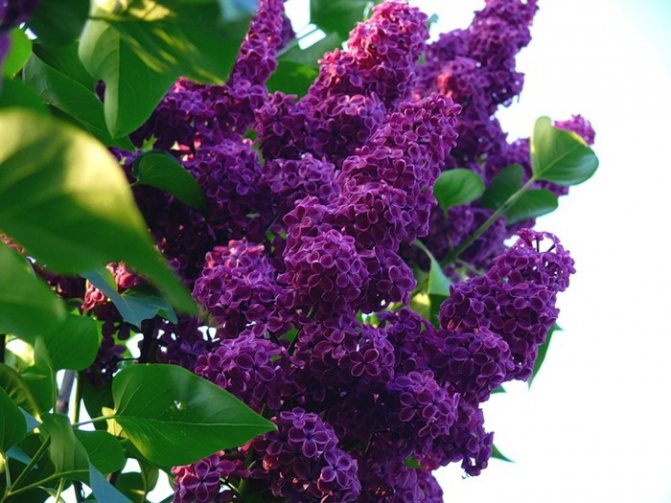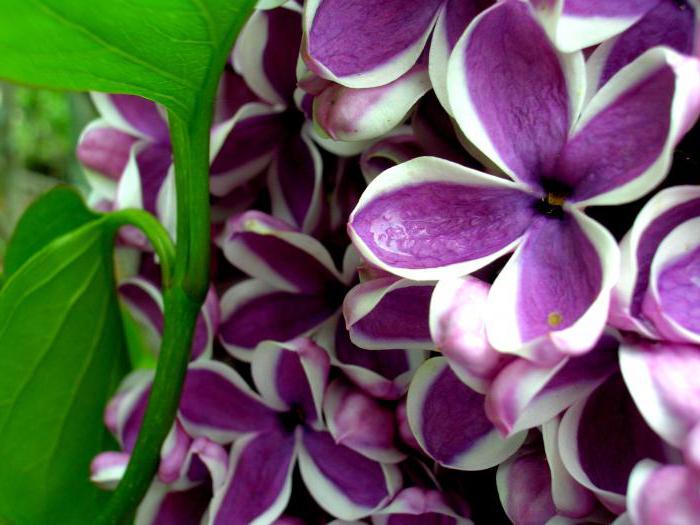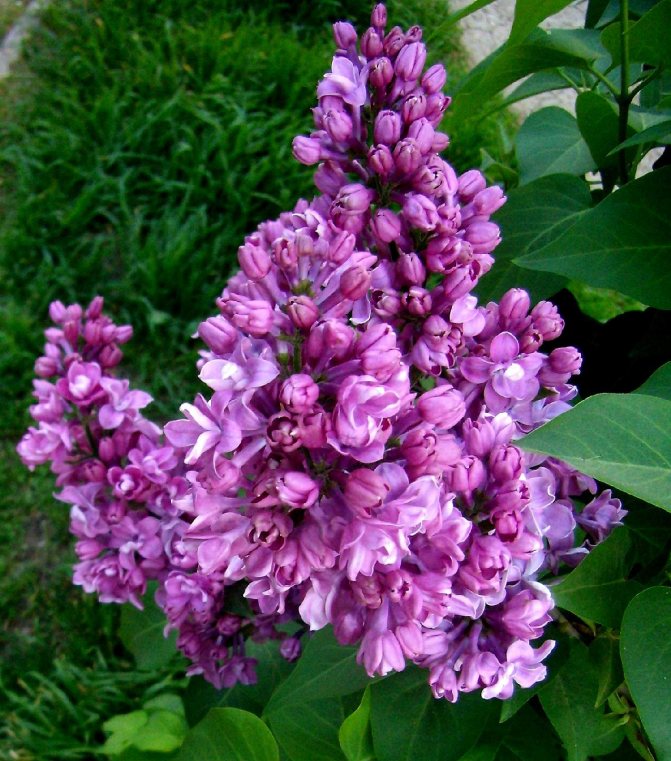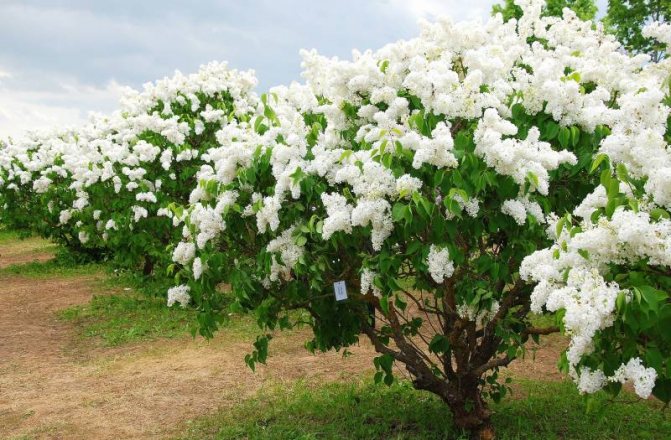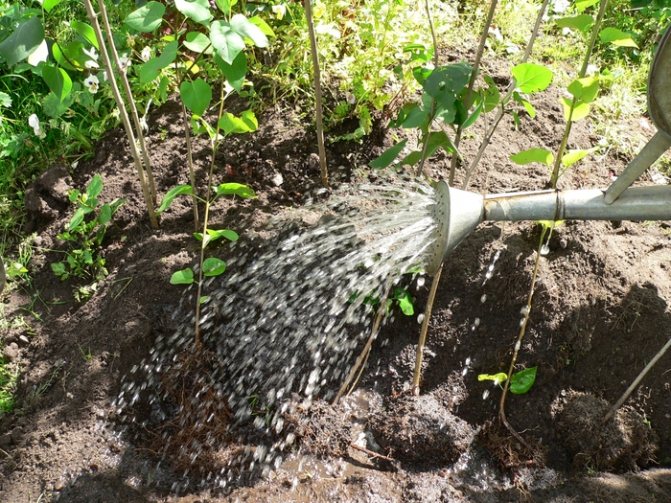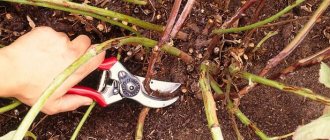Lilac is a multi-colored garden shrub that does not require special care. There are over 2000 varieties of this tree. It is rarely attacked by diseases, insects. And its advantage is rapid growth.
When growing a shrub, problems may arise: seedlings do not always take root. This happens due to unsuitable land, non-compliance with the terms and rules of planting. Regardless of the variety, in order for the lilac to take root, you need to know when to plant the tree. The usual dates are August-September.
Planting common lilac
The optimal planting time depends on the form in which the seedling went on sale. The best time to plant open-root seedlings is early fall. Planting lilacs in the fall should be completed by the end of September.
Lilac leaves retain their green color until frost, therefore, on a seedling intended for autumn planting, they should be green. If a lilac seedling without leaves is a bad sign, which means that the planting dates have passed. It must be placed in a ditch until spring, as is done with fruit tree seedlings.
The timing of planting lilacs in the spring is compressed. You need to have time to get the seedling out of the trench and plant it in a permanent place before the buds bloom, so it is better to prepare the hole in the fall - then you will not have to gouge the frozen soil with a shovel. Planting lilacs in summer is possible if you buy a seedling in a container.
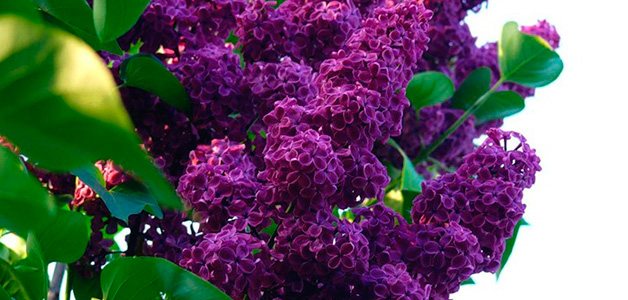
Lilacs take root if no mistakes are made during planting:
- Failure to meet deadlines.
- Planting in acidic, structureless clay soil.
- Landing in deep shade.
- Landing in a swampy or temporarily flooded area in the lowlands.
Lilac loves light, but it will not die in partial shade, but will not bloom as luxuriantly as in the sun. As for the quality of the soil, this plant grows freely even on poor, uncultivated land. But the plant feels better on fertile loose soil with a reaction close to neutral.
Lilac does not tolerate flooding and soils with a soil solution reaction below 5.5, on which the leaves turn yellow and crumble. For the planting of lilacs to succeed, the soil must be breathable.
How to plant lilacs:
- Digging a hole. The less cultivated the soil, the larger the hole should be. The free space in the pit is filled with fertile soil mixed with a small amount of compost or peat - up to 1/4 of the soil volume. In old gardens, you can dig small holes for lilacs - such that only the roots of the seedling fit in them.
- The grafted lilacs are planted so that the grafting site is at the soil level. The grafting should not be in the soil, so that the plant does not pass on to its roots. An exception will be seedlings grafted onto Hungarian lilacs or privet, which are planted with the grafting deepening to make them more durable.
- Own-rooted lilacs are buried when planting so that additional roots are formed.
- The roots are covered with fertile soil and trampled underfoot, forming a near-stem hole. First you need to make sure that the root collar is at the right level.
- The well is poured abundantly with water.
Planting Hungarian lilacs, as well as Persian and Amur, is carried out according to the same rules as in the case of common lilac.
Suitable shrub varieties
The plant perfectly adapts to various climatic conditions, but there are varieties that feel especially good in the Moscow region. You should pay attention to them first of all. This does not mean that other seedlings should not be planted, but the lilacs listed below will require minimal maintenance to ensure vigorous flowering.
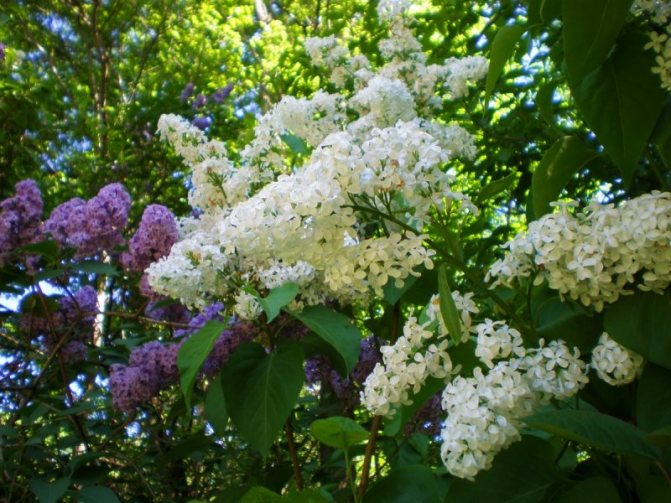

Even a novice florist will cope with such varieties:
- Peacock;
- Caterina Havemeyer;
- President Poincaré;
- Captain Balte;
- Monique Lemoine;
- Amurskaya;
- Hungarian;
- All varieties bred by Kolesnikov. The most widely known of them are "the beauty of Moscow" and "twilight".
However, there are known varieties that cannot be grown in the conditions of the Moscow region. They are very whimsical, do not tolerate temperature fluctuations and fluctuations in humidity, and die.
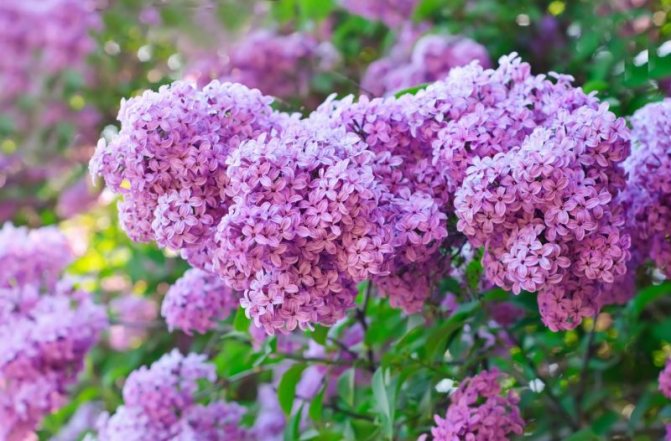

Such delicate, unsuitable for planting varieties include:
- variegated lilac;
- pinnate lilac;
- hyacinth lilac.
The variety of varieties suitable for growing in gardens and parks near Moscow makes it possible to create beautiful hedges, in which plants with different colors of flowers and flowering periods will alternate. In a single planting, lilac also looks very beautiful, and if you wish, you can shape it with a tree. Old plants can grow to a significant size, which should be taken into account when planting near houses.
How to care for lilacs
Caring for lilacs is no different from caring for most winter-hardy ornamental shrubs. Lilac tolerates cold weather, so it does not have to be insulated for the winter. Only in young grafted plants in the year of planting can the trunks be mulched with a thick layer of fallen leaves.
After planting, the plant is watered abundantly until it starts to grow. Watering lilacs is needed only when necessary - in the heat. Autumn water-charging irrigation for lilacs is not carried out.
In the early years, while the lilac does not bloom, fertilizers are not applied under it. Plants have enough organic matter added to the planting pits. Young bushes need loosening of the soil, weeding and watering.
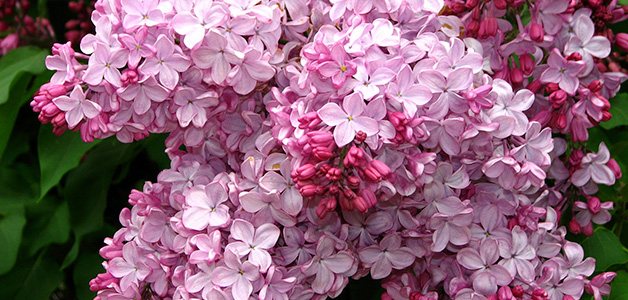

The lilac bush begins to bloom in the third year. Then you can start the annual feeding. Mineral fertilizers will make the brushes larger, brighter and more aromatic, and increase their number.
In the spring, before flowering, you need to have time to loosen the soil in the near-trunk circle at least once and feed the plant with any complex mineral fertilizer, soluble in water. The roots of the lilac are superficial, so you need to loosen the soil carefully and shallowly.
Plant diseases and pests
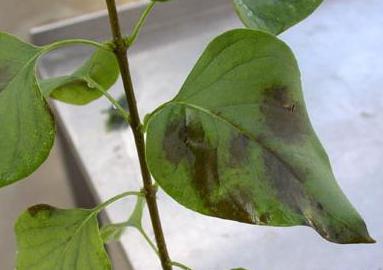

For those who want to acquire a chic, pleasantly smelling plant on their own plot, it is worth knowing everything about this culture: what are behind such a plant as lilac, planting and care, its diseases, pruning timing and watering regime. Pests and diseases rarely affect lilacs. This is a lilac miner moth, the object of which is the leaves of a bush. After exposure to this insect, the lilac looks as if burnt and practically does not bloom the next year. Fight against such a pest should be by deep digging of the soil under the bush in autumn and spring (in order to destroy the pupae that have settled in the soil), cutting and burning the affected shoots.
Also, lilac, planting and caring for which bring a lot of joy to true lovers of beauty, is sometimes struck by bacterial necrosis; this happens in early August. The disease is transmitted by irrigation water, insects, planting material. It is possible to determine the presence of this disease by the graying of the leaves and the browning of the shoots. In this case, the use of drugs aimed at pest control, removal and disposal of damaged plant parts, uprooting and burning of heavily affected bushes is required.
Lilac care after flowering
Loosening and watering is stopped by the beginning of August, so as not to stimulate the growth of shoots.The wood must have time to ripen by winter, and for this it needs to stop growing in time.
Caution should be exercised only with nitrogen fertilizers, with an excess of which the lilac begins to fatten, that is, instead of flowering, it will begin to throw out new shoots and leaves. On the other hand, in order to bloom annually, the bush must give normal growth, which is impossible without nitrogen. Here you have to look for a "golden mean" - for example, very moderately feeding the plant once a season with urea or mullein, and do this in early spring, when the buds are just beginning to wake up.
Unlike nitrogen, phosphorus and potassium minerals will do nothing but benefit. Phosphorus is introduced in the fall, at the beginning of October, in the amount of 40 grams. for young and 60 gr. on an adult bush. This element affects the size and quality of flowers.
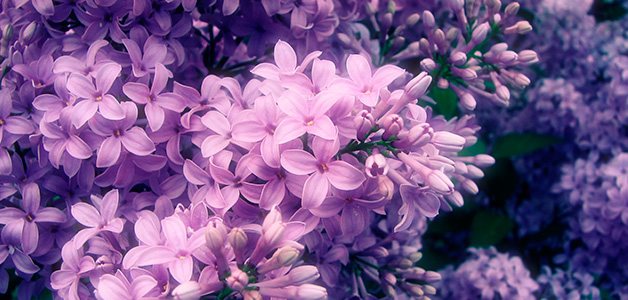

Potassium makes the plant winter hardy. After potash fertilization, flower buds tolerate frost well, do not freeze and the bush blooms profusely in spring. Potassium is added together with phosphorus at the rate of 3 tbsp. on a large adult bush.
Lilac loves feeding with wood ash, since this substance, unlike mineral fertilizers, does not acidify, but alkalizes the soil. Ashes are poured with cold water - 1 glass per 10 liters, insisted for 2 days and poured onto each bush, 2 buckets of such an infusion. But first you need to water the plants with clean water so as not to burn the roots.
Ash bushes are fed twice a season: immediately after flowering, when new flower buds are laid, and in October. If ash is applied, then mineral fertilizers do not need to be added in the fall.
Growing lilacs
For lilacs to receive proper care, pruning must be systematic. The bush will have an attractive shape and will be able to bloom annually.
Bush
Pruning begins when the plant begins to form skeletal branches. This happens in the third year.
Skeletal branches will later become the basis of the bush. Of course, the bush itself will form them. By intervening in this process in time, you can better influence the future shape and size of the bush.
In the third year, in early spring, while the buds are still asleep, and the branches are not hidden by foliage and are clearly visible, up to 10 evenly spaced branches are found on the plant, which must be left. The remaining branches are cut off.
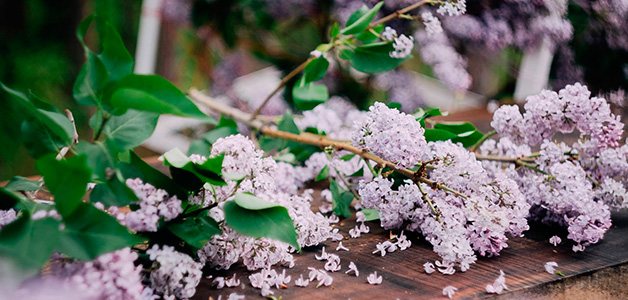

In the future, they are limited to sanitary pruning, cutting out branches in early spring that grow inside the crown, dried up over the winter and damaged by pests. If necessary, sanitary pruning can be carried out at any time during the growing season. Wild growth is removed from grafted lilacs in spring.
When the lilac blooms, more than half of the flowering shoots can be cut off from it without harming the plant and used to create bouquets. If they are not cut, then next year fewer shoots will form and flowering will be weak. It is better to immediately remove faded brushes from the branches with pruning shears so that they do not spoil the appearance of the bush.
Lilac flowers are best cut early in the morning, before the dew dries. In order for the flowers to stand in the water longer, the ends of the shoots should be split with a hammer or knife.
A bush over 10 years old can be rejuvenated by removing one skeletal branch per year. New skeletal branches are formed from dormant buds, which bloom on the trunk next to the marks from the sawn branches.
In the form of a tree
- Immediately after planting, remove all side branches, if any.
- When the seedling begins to grow, all side branches are removed from it, while they are green and weak, leaving the stem growing upward.
- When the stem reaches the desired height - in the second year, pinch its top. After that, it will stop growing up and become a stem.
- After pinching the top, dormant buds will wake up in the upper part of the trunk, from which several shoots will begin to grow upward. Of these, you can leave as many skeletal branches as the future tree is supposed to have.
Tips from seasoned gardeners
The latest flowering lilac finishes its growth and flowering in July, the process of wood ripening and the setting of flower buds begins. It is no longer necessary to loosen the ground and water the plant, otherwise its growth will be delayed, ripening will slow down.
Every fall, you need to remove overgrowth and dig up the soil. The depth is 10-12 centimeters. There is such a nuance: in order not to damage the root collar of the plant, first the cut of earth with weeds is removed by 5 cm, then, as the neck deepens, the digging depth is brought to 12 cm. It is not necessary to level the dug earth.
https://youtu.be/6OHHF1fbtqY
Lilac care cultivation reproduction: video Loosening the soil under the lilac is best done in early spring, this will retain moisture in the ground and stimulate better plant growth.
Lilac has strong roots that grow regularly (root growth). If this process is not controlled, the root growth will spread far beyond the crown of the entire bush. Considering that the roots are not located deeply, it is not difficult to restrict their access to the rest of the garden, it is enough to dig in a tape of slate, plastic or thin iron (depth up to 40 cm) around the lilac for a radius of about one meter.
It is worth considering that lilac in this case will grow more slowly and it will need feeding due to the limited feeding area.
Creating a lilac hedge
Amur lilacs are suitable for use as a hedge, because after pruning, the branches do not stretch up very much, like in other species. Low-growing Mayer's lilac is also suitable.
Saplings for the hedge, which is supposed to be cut annually at a height below human height, are planted a meter apart. Such a hedge will not bloom, but it looks neat. For a flowering hedge, lilac bushes are planted 1.5 meters from each other.
In the second year, young, not yet lignified branches of neighboring bushes are intertwined like a fishing net, securing them in this position with a rope or soft wire. When such a hedge grows, neither a man nor a large animal can cross it.
Lilac grows quickly, and with regular watering, already in the third year, forms a dense green "fence", which can be cut. High hedges are pruned after flowering, low hedges at any time.
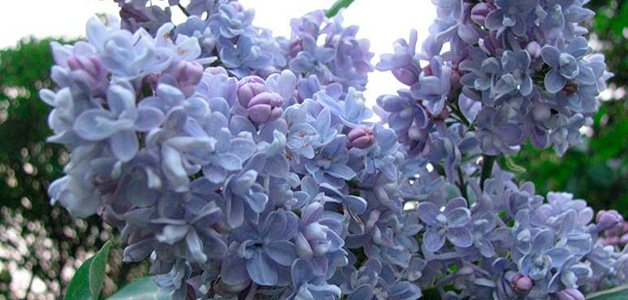

Reproduction of lilac
Lilacs can be propagated by seeds and vegetatively. With the seed method, the parental characteristics are not preserved, therefore the only way to propagate the planting material is vegetative, and the seed is used only to obtain new varieties.
Lilac vegetative propagation methods:
- vaccination;
- layering;
- green cuttings.
Reproduction by grafting allows you to quickly get a large amount of planting material of the same height. The method is available only to gardeners with skills.
Lilacs are grafted by cutting or budding. For the stock, take Hungarian lilac or privet.
"Hungarian" and privet are not very successful rootstocks for common lilac, since in this case two different species merge into one whole. The resulting plant will not be durable. The life span depends on a mass of factors and is 2-20 years.
"Hungarian" and privet are often used in nurseries as a rootstock. The fact is that the seedlings grafted on them come to the middle lane from the southern regions. Privet is cut and transported, but in reality it is an unreliable stock, valuable only for its cheapness.
It is more convenient for the gardener to root-own seedlings obtained from layering in amateur conditions or cuttings in industrial conditions. Own-rooted plants are durable and do not produce wild growth. Not all varieties of lilacs are propagated by layering in amateur conditions, this is especially true for modern - fashionable and sophisticated varieties.


